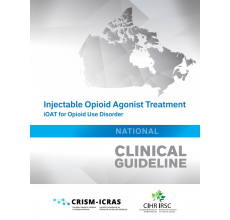Injectable Opioid Agonist Treatment iOAT for Opioid Use Disorder

Canadian Research Initiative in Substance Misuse (CRISM)
-
ndividuals with severe opioid use disorder who inject opioids and have not adequately benefited from oral opioid agonist treatment face substantial risks, including premature death, nonfatal overdose, blood-borne infectious diseases, violence and arrest.
-
Individuals with severe opioid use disorder who inject opioids may not benefit adequately from oral opioid agonist treatment medications, for a variety of reasons.
-
This guideline recommends that injectable opioid agonist treatment be considered for individuals with severe, treatment-refractory opioid use disorder and ongoing illicit (nonmedical or illegal or both) injection opioid use.
-
For patients who are determined to be likely to benefit from injectable opioid agonist treatment, both diacetylmorphine and hydromorphone are acceptable treatment options.
-
Injectable opioid agonist treatment should be provided as an open-ended treatment, with decisions to transition away from injectable opioid agonist treatment made collaboratively with the patient.
La Comisión Europea está preparando una tercera fase de este programa, por lo que COPOLAD volverá a principios de 2021.

